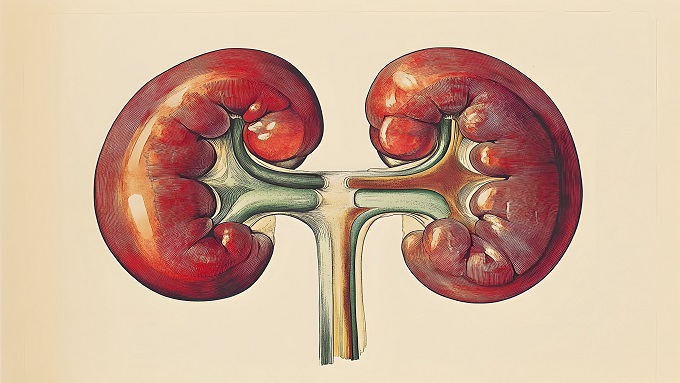BACTERIAL AND SENSITIVITY PATTERN OF PATHOGENS CAUSING VENTILATOR-ASSOCIATED PNEUMONIA IN INTENSIVE CARE UNIT

Downloads
Highlight:
1. Antimicrobial resistance bacteria isolated from VAP patients are often associated with high mortality and length of hospital stay.
2. Mortality in VAP patients was 33.3% and the VAP group had a longer hospital stay compared to the non-VAP group.
3. The three most predominant bacteria that were found were A. baumannii, P. aeruginosa, K. pneumoniae. Cefoperazone-sulbactam, meropenem and amikacin were more than 70% sensitive against these bacteria.
Abstract:
Background: Ventilator-Associated Pneumonia (VAP) is the most common nosocomial infection in Intensive Care Unit (ICU). Antimicrobial resistant bacteria isolated from VAP patients are often associated with high mortality and length of hospital stay. Objective: This study aimed to analyze the pattern and sensitivity among pathogens that caused VAP in ICU. Materials and Methods: The study was conducted retrospectively by extracting the data of bacterial isolates from sputum specimens in the Laboratory of Clinical Microbiology, Dr. Soetomo General Academic Hospital, Surabaya, Indonesia and confirming the clinical data on patients suffering from VAP in ICU ward. The study started from January until December 2017. Results: The total 148 pathogens were isolated, 18 of them were diagnosed as VAP, and 130 were not VAP. The most predominant isolates in the VAP group were Acinetobacter baumannii as many as 38 (9%) followed by Pseudomonas aeruginosa 22 (2%), E. coli 16 (7%), and Klebsiella pneumoniae 11 (1%). The pathogens showed a sensitivity rate above 70% to cefoperazone-sulbactam (SCF), meropenem (MEM) and amikacin (AK). Mortality in VAP patients was 33.3% and the VAP group had a longer hospital stay compared to non-VAP group. Conclusion: The three most predominant bacteria that were found were A. baumannii, P. aeruginosa, K. pneumoniae. The pathogens had sensitivity rate above 70% to cefoperazone-sulbactam, meropenem, and amikacin.
Ali, S., Waheed, K., Iqbal, Z. H. 2015. Microbiological Pattern of Ventilator Associated Pneumonia. Journal of Ayub Medical College, Abbottabad : JAMC, 27(1): 117–119.
Ammar, M. & Abdalla, W. 2018. Effect of extended infusion of meropenem and nebulized amikacin on Gram-negative multidrug-resistant ventilator-associated pneumonia. Saudi Journal of Anaesthesia, 12(1): 89–94. doi: 10.4103/sja.SJA_148_17.
Awad, L. S., Abdallah, D.I., Mugharbil, A.M., Jisr, T.H., Droubi, N.S., El-Rajab, N.A., Moghnieh, R.A., 2018. An antibiotic stewardship exercise in the ICU: Building a treatment algorithm for the management of ventilator-associated pneumonia based on local epidemiology and the 2016 infectious diseases society of America/American thoracic society guidelines. Infection and Drug Resistance, 11: 17–28. doi: 10.2147/IDR.S145827.
Bozorgmehr, R., Bahrani, V., Fatemi, A., 2017. Ventilator-associated pneumonia and its responsible germs; an epidemiological study. Archives of Academic Emergency Medicine, 5(1): e26. doi: 10.22037/aaem.v5i1.150.
Centers for Disease Control and Prevention., 2014. CDC/NHSN surveillance definitions for specific types of infections. Atlanta (US): CDC.
Ergul, A. B., Cetin, S., Ay Altintop, Y., Bozdemir, S.E., Ozcan, A., Altug, U., Samsa, H., Altuner Torun, Y., 2017.Evaluation of microorganisms causing ventilator-associated pneumonia in a Pediatric Intensive Care Unit, 49(2): 87–91. doi: 10.5152/eurasianjmed.2017.16262.
Golia, S., Sangeetha, K. T. & Vasudha, C. L. 2013. Microbial profile of early and late onset ventilator associated pneumonia in the intensive care unit of a tertiary care hospital in Bangalore, India. Journal of Clinical and Diagnostic Research, 7(11): 2462–2466. doi: 10.7860/JCDR/2013/6344.3580.
Kalanuria, A. A., Zai, W. & Mirski, M., 2014. Ventilator-associated pneumonia in the ICU. Critical Care, 18(2): 1–8. doi: 10.1186/cc13775.
Kalil, A. C., Metersky, M.L., Klompas, M., Muscedere, J., Sweeney, D.A., Palmer, L.B., Napolitano, L.M., O'Grady, N.P., Barlett, J.G., 2016. Management of Adults With Hospital-acquired and Ventilator-associated Pneumonia: 2016 Clinical Practice Guidelines by the Infectious Diseases Society of America and the American Thoracic Society. Clinical Infectious Diseases, 63(5): e61–e111. doi: 10.1093/cid/ciw353.
Koulenti, D., Tsigou, E., Rello, J., 2017. Nosocomial pneumonia in 27 ICUs in Europe: perspectives from the EU-VAP/CAP study. European Journal of Clinical Microbiology and Infectious Diseases, 36(11): 1999–2006. doi: 10.1007/s10096-016-2703-z.
Marianna, D. B., Simona, C., Marta, I., Viviana, M., Edoardo, D.R., Rosalba, T., Ornella,P., 2012. Prognostic differences between VAP caused by Acinetobacter Baumannii and VAP by other microorganisms. Transl Med UniSa, 30(3): 15-21.
Nowak, J., Zander, E., Stefanik, D., Higgins, P.G., Roca, I., Vila, J., McConnell, M.J., Cisneros, J.M., Seifert, H., WP4, MWG., 2017. High incidence of pandrug-resistant Acinetobacter baumannii isolates collected from patients with ventilator-associated pneumonia in Greece, Italy and Spain as part of the MagicBullet clinical trial. Journal of Antimicrobial Chemotherapy, 72(12): 3277–3282. doi: 10.1093/jac/dkx322.
Patil, H. V. & Patil, V. C., 2017. Incidence, bacteriology, and clinical outcome of ventilator-associated pneumonia at tertiary care hospital. Journal of Natural Science, Biology and Medicine, 8(1): 46–55. doi: 10.4103/0976-9668.198360.
Qin, Y., Zhang, J., Wu, L., Zhang, D., Fu. L., Xue, X., 2018. Comparison of the treatment efficacy between tigecycline plus high-dose cefoperazone-sulbactam and tigecycline monotherapy against ventilator-associated pneumonia caused by extensively drug-resistant Acinetobacter baumannii. International Journal Of Clinical Pharmacology And Therapeutics, 56(3): 120. doi: 10.5414/CP203102.
Radji, M., Fauziah, S., Aribinuko, N., 2011. Antibiotic sensitivity pattern of bacterial pathogens in the intensive care unit of Fatmawati Hospital, Indonesia. Asian Pacific Journal of Tropical Biomedicine, 1(1): 39–42. doi: 10.1016/S2221-1691(11)60065-8.
Spalding, M. C., Cripps, MW., Minshall, C. T. 2020. Ventilator-Associated Pneumonia: New definitions. Crit Care Clin, 33(2):277-292. doi: 10.1016/j.ccc.2016.12.009.
Tyas, M. W., Suprapti, B., Hardiono., Widodo, A.D.W., 2013. Analysis of Antibiotic Use in Vap (Ventilator-Association Pneumonia) Patients. Folia Medica Indonesiana, 49(3): 168–172. Available at: http://journal.unair.ac.id/FMI@analysis-of-antibiotic-use-in-vap-(ventilator-association-pneumonia)-patients-article-7582-media-3-category-3.html.
Ventola, C. 2015. The antibiotic resistance crisis: part 1: causes and threats. Pharmacy And therapeutics, 40(4): 277.
Walaszek, M., RóżaÅ„ska, A., Walaszek, M.Z., Wójkowska-Mach, J., 2018. Epidemiology of ventilator-associated pneumonia, microbiological diagnostics and the length of antimicrobial treatment in the Polish Intensive Care Units in the years 2013-2015. BMC Infectious Diseases, 18(1): 1–9. doi: 10,1186/s12879-018-3212-8.
Zhang, D., Chen, C., Zhou, W., Chen, J., Mu, DZ., 2013. Pathogens and risk factors for ventilator-associated pneumonia in neonates. Zhongguo Dang Dai Er Ke Za Zhi, 15(1): 14–8.
Zilberberg, M. D., Nathanson, B.H., Sulham, K., Fan, W., Shorr, A.F., 2017. Carbapenem resistance, inappropriate empiric treatment and outcomes among patients hospitalized with Enterobacteriaceae urinary tract infection, pneumonia and sepsis. BMC Infectious Diseases, 17(1): 1–13. doi: 10.1186/s12879-017-2383-z.
Copyright (c) 2022 Marsheila Harvy Mustikaningtyas, Bambang Pujo Semedi, Kuntaman Kuntaman

This work is licensed under a Creative Commons Attribution 4.0 International License.
1. The journal allows the author(s) to hold the copyright of the article without restrictions.
2. The journal allows the author(s) to retain publishing rights without restrictions.
3. The legal formal aspect of journal publication accessibility refers to Creative Commons Attribution 4.0 International License (CC-BY).
































